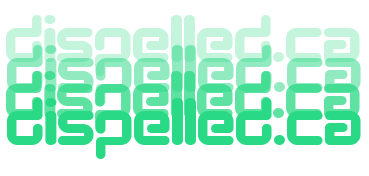Overview of Firewalling in 2025
Firewalls remain a cornerstone of network security in 2025, evolving to meet the challenges of modern threats and increasingly complex network environments. This tutorial provides an advanced overview of firewalling, covering key concepts, modern trends, and the technologies shaping the future of network security.
What is a Firewall?
A firewall is a network security device or software that monitors and controls incoming and outgoing network traffic based on predefined security rules. Firewalls act as a barrier between trusted internal networks and untrusted external networks, such as the internet.
Key Concepts in Firewalling
To understand modern firewalling, it’s essential to grasp the following key concepts:
- Packet Filtering: Examining individual packets of data and allowing or blocking them based on rules such as source/destination IP, port, and protocol.
- Stateful vs. Stateless Filtering:
- Stateful Filtering: Tracks the state of active connections and makes decisions based on the connection state (e.g., TCP handshake).
- Stateless Filtering: Makes decisions based solely on individual packets without considering connection state.
- Network Address Translation (NAT): Modifies IP addresses in packet headers to enable private networks to communicate with external networks.
- Application-Layer Firewalls: Inspects traffic at the application layer (e.g., HTTP, DNS) to detect and block malicious activity.
- Intrusion Detection and Prevention: Firewalls increasingly integrate IDS/IPS capabilities to detect and block suspicious activity in real-time.
Modern Trends in Firewalling
Firewalling in 2025 has evolved significantly to address new challenges and leverage emerging technologies:
- Zero Trust Architecture (ZTA): Firewalls are now integral to Zero Trust models, where no device or user is trusted by default, even within the internal network.
- Cloud-Native Firewalls: With the rise of cloud computing, firewalls are now deployed as virtual appliances or integrated into cloud platforms (e.g., AWS Security Groups, Azure Firewall).
- Containerized Environments: Firewalls are adapting to secure containerized workloads in platforms like Kubernetes, using tools such as `Cilium` and `Calico` for microsegmentation.
- AI and Machine Learning: Firewalls increasingly use AI/ML to analyze traffic patterns, detect anomalies, and respond to threats dynamically.
- Integration with SD-WAN: Firewalls are now integrated into SD-WAN solutions to provide secure and optimized connectivity for distributed networks.
Types of Firewalls
Firewalls can be categorized based on their deployment and functionality:
- Hardware Firewalls: Dedicated devices designed to handle high volumes of traffic (e.g., enterprise-grade appliances like Palo Alto, Fortinet).
- Software Firewalls: Installed on servers or endpoints to provide host-based protection (e.g., OpenBSD `pf`, Linux `nftables`).
- Cloud Firewalls: Virtual firewalls deployed in cloud environments to secure cloud-based workloads.
- Next-Generation Firewalls (NGFWs): Combine traditional firewalling with advanced features like application awareness, IDS/IPS, and deep packet inspection.
Challenges in Modern Firewalling
Despite advancements, firewalls face several challenges in 2025:
- Encrypted Traffic: The widespread use of HTTPS and encrypted protocols makes it harder for firewalls to inspect traffic without SSL/TLS decryption.
- Distributed Networks: The rise of remote work and IoT devices has increased the complexity of securing distributed networks.
- Performance vs. Security: Balancing the need for high performance with the demands of deep packet inspection and advanced threat detection.
- Misconfiguration: Human errors in firewall configuration remain a leading cause of security breaches.
Popular Firewalling Technologies in 2025
Here are some of the most widely used firewalling technologies in 2025:
- OpenBSD `pf`: A powerful and flexible packet filter used in OpenBSD and FreeBSD systems.
- Linux `nftables`: The modern replacement for `iptables`, offering improved performance and flexibility.
- pfSense: A FreeBSD-based firewall and router platform with a user-friendly web interface.
- Cloud-Native Firewalls: Tools like AWS Security Groups, Azure Firewall, and Google Cloud Firewall for securing cloud workloads.
- Next-Generation Firewalls: Enterprise-grade solutions like Palo Alto Networks, Fortinet, and Cisco Firepower.
Best Practices for Firewalling
To maximize the effectiveness of your firewall, follow these best practices:
- Principle of Least Privilege: Only allow the minimum traffic necessary for your network to function.
- Regular Rule Audits: Periodically review and update firewall rules to remove unnecessary or outdated entries.
- Enable Logging: Log all firewall activity to monitor for suspicious behavior and troubleshoot issues.
- Use Stateful Filtering: Leverage stateful filtering to track connection states and block unauthorized traffic.
- Segment Your Network: Use VLANs or subnets to isolate sensitive systems and reduce the attack surface.
- Test Configurations: Test firewall rules in a staging environment before deploying them to production.
Conclusion
Firewalling in 2025 is more advanced and versatile than ever, adapting to the challenges of modern networks and leveraging cutting-edge technologies. Whether you're using OpenBSD's `pf`, Linux's `nftables`, or a cloud-native solution, understanding the fundamentals and staying informed about emerging trends is essential for effective network security.
In the next tutorial, we’ll dive into OpenBSD’s `pf` (Packet Filter) firewall, exploring its features, configuration, and use cases. Stay tuned!
Check out some Bands on Bandcamp.com. Seven Times Refined by Altogether Steve and the Mercenaries, Crazy Fingers (Vancouver 1991), Flying Butt Pliers, and Hammy Ham Hands.
Proudly powered by a Text Editor, an IDE, an SFTP client, some Internet searches, and more recently help from some AI.
2025 dispelled.ca end of file.
